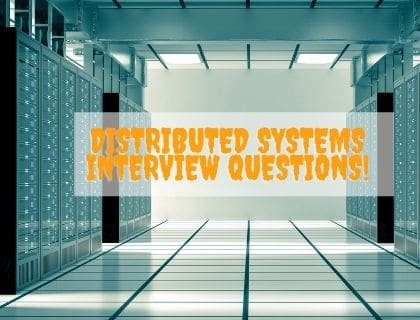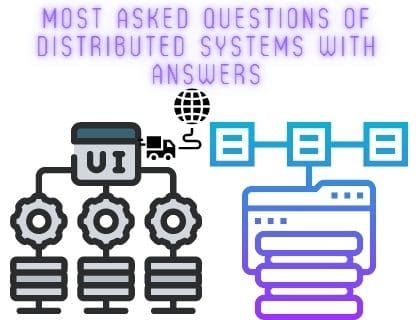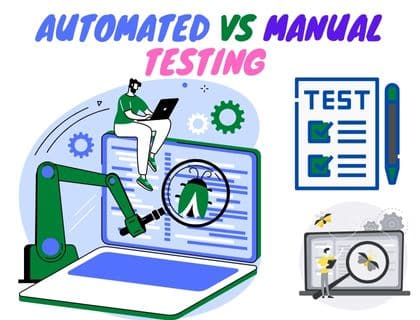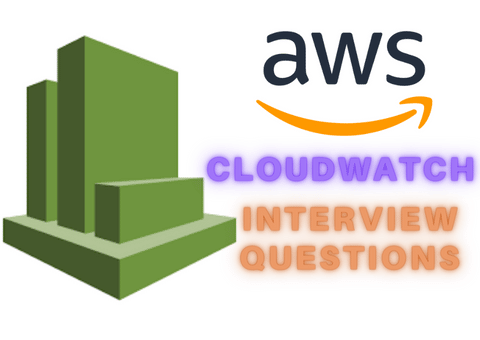
The distributed systems interview questions are designed to evaluate the distributed application developer’s knowledge of distributed computing. A distributed system is a software system that can be decomposed into loosely coupled, autonomous components running on multiple computers in an interconnected network. The objective of this distributed systems interview question and answer blog post is to provide you with all latest and most frequently asked distributed systems interview questions and answers so that you can ace your next job interview!
Distributed Systems Interview Questions
Following are the most asked interview questions which are very useful for Beginner, Advanced Experienced programmers, and distributed system architects.

1. What Are Distributed Systems?
Distributed systems are a type of software environment or computer system that has various components dispersed across several computing devices (or various other gadgets) over the internet. The work is split up and coordinated by these networks so that it can be completed more efficiently than if one computer or device had been responsible for handling everything alone.
In simple words, it means “distributed” as compared to being “centralized” or a single point of contact for all communications and processing between computing devices. For example, Distributed file systems allow several physical storage devices, such as disk drives, to appear as one large storage resource to computer applications. The distributed operating system manages separate resources but appears from the user’s perspective as a unified whole with its own namespace (e.g., files are given names independent of their location).
2. What are distributed systems used for?
Distributed Systems have the potential to deliver high performance and availability by increasing data locality using distributed resources. Distributed computing allows us to achieve greater scale than a single computer could provide because it provides concurrent processing power of all machines involved providing redundancy against machine failures or scheduled maintenance downtime. A distributed architecture usually implies distribution across physical hardware which is more complex but has advantages over sharing one large server such as being able to take advantage of specialized pieces of hardware designed specifically to improve computational efficiency, reliability and fault tolerance while also allowing applications to make use of computing resources located close together (reducing latency).
3. How does a distributed system work?
Distributed systems have developed through time, however, the most popular implementations today are designed to work on the internet and more specifically in the cloud. A distributed system begins with an input task such as rendering videos or creating finished products ready for release that can be accessed from anywhere at anytime on any device through web browsers like Google Chrome etc., laptops/desktops running Microsoft Windows 10 among other things.
4. What has distributed garbage collection?
A distributed system may need to manage resources that are local only to one of the machines in the network. Distributed Garbage Collection provides automatic management for these resources by treating all instances as part of one logical system. This allows programs running on many different computers within the distributed system to cooperate using their own private objects without worrying about who has access or how they can be collected when no longer needed. It also ensures that object references will remain valid even if some other process on another machine suddenly decides, perhaps due to an application bug, not to release an object it was holding onto and therefore causes its memory usage footprint to grow beyond what you expect.
5. What have distributed computing techniques?
Distributed Computing is the science that deals with distributed systems. A distributed system can be defined as a collection of independent computers that appear to its users as if they were one single computer. It may sound simple, but designing and building these kinds of applications requires special expertise because you have to deal with many different components at once: communication links between machines, processors on each machine or device, operating systems running locally on every node in the network etc. Designing fault-tolerant distributed applications brings additional challenges since there might not always be alternatives for communication paths when some parts go down (e.g., due to maintenance). These types of applications must also take into account what happens when nodes join or leave the distributed system at runtime.
6. What have distributed algorithms?
Distributed Algorithms are a class of algorithms that solve problems in distributed computing environments by relying on multiple processes or devices to obtain a solution that is guaranteed to be identical across all processes or devices. If you want your application (e.g., web service) to work with some degree of fault tolerance, you need it to make sure its results don’t depend entirely on any single point of failure and instead rely on redundant parts. Which may include hardware components, virtual instances etc..
7. Give Some examples of a distributed system?
Following are the main example of distributed systems:
- The telephone system and cellular networks are excellent examples of a Distributed System.
- The World Wide Web is another distributed system that allows people to connect with each other through computers all over the world which creates a virtual community where anything can happen.
- Parallel computation
- Aircraft control systems employ similar principles by using information from different sources at once in order for planes not only to know what direction they’re going but also how fast or slow they should fly according to wind conditions etc…
- Peer-to-peer networking apps like BitTorrent (for downloading)
8. What are the types of distributed systems?
Following are some main types of distributed systems:
- Client-serve Sytems
- Multi-tier distributed systems
- Peer-to-peer distributed systems
- Three-tier
- Middleware
- Three-tier distributed systems
- N-tier distributed systems
- Layered architecture
9. Why we use distributed system? Advantages of the distributed system?
The main advantages of a distributed system is as follows: scalability, fault tolerance and availability. For example, if one node crashes in a distributed database there are multiple other nodes available to keep the work running smoothly without any disruption or downtime for users. That’s why distributed processing has become more popular than centralised computing where all data was stored on a single server that can be easily affected by hardware failure or even an attack from hackers etc. Other advantages include:
- Hight Performance
- Reliability
- Communication
- Incremental growth
- Sharing of data & resources
10. What is mobile and ubiquitous computing in distributed systems?
- “Mobile computing” is the new trend in technology. Mobile devices are becoming more and more powerful, allowing them to do what desktop computers could only dream of doing just a few years ago. The ability to use your mobile device anywhere at any time means that we can now accomplish things like work remotely while travelling abroad.
- The term ‘ubiquitous Computing’ is an interesting way to think about the world around us. Small computing devices will eventually become so prevalent in everyday objects that they are hard-to-notice, even when you’re looking for them!
11. What are distributed systems in software?
Distributed software is an application on computers that lets components on computers that are networked collaborate and plan their activities via sending messages. In distributed software, the component providing decentralization is usually large in size allowing it to be broken into smaller parts that can run concurrently on different nodes or machines. This feature makes distributed computing suitable for distributed software. The distributed system is the combination of multiple computers that performs a certain task as part of a larger program, which has been designed to solve complex problems by decomposing them into smaller tasks.
12. what are the main Characteristics of Distributed systems?
In a distributed system, the program executes concurrently and there is no global time. Components can fail independently as well–so it’s important for these types of systems to be designed with safety in mind from day one!
13. Why We Need Openness?
The openness of the distributed system is determined primarily by its ability to offer new resource-sharing services. Open systems are characterized as one in which their key interfaces for accessing shared resources and information on how they work, who’s using them at any given time etc., can be made available through publication or broadcasting – this allows all members without access limitations so long as there is someone present with permission from administrators acting locally (or otherwise). It could also take form when diverse hardware/software platforms coexist within an ecosystem where interactions occur between these separate entities due solely thanks partially because each has something unique that complements another’s design approach well enough allowing further development opportunities based on what works best.
14. Main Security Concepts of Distributed Systems?
There are two main mechanisms in ensuring communication security, which is to be safeguarded by encryption and traffic padding. The most important techniques used for Security are Encryption, Authentication and Authorization.
15. What is the transparency dogma in distributed systems ?
The idea of transparency is common in software systems as it allows for a degree of independence between clients and implementation. This may be positive because it prevents the system from dealing correctly with many complex partial failures that arise when trying to implement services on its own, but Full transparency is unlikely to be a positive thing as it will prevent the system from dealing correctly with many complex partial failures that arise in practice.
16. Where is the middleware used?
Middleware, which can include security authentication and transaction management amongst other things is used for a variety of purposes. It often sits between your web applications or services to make them more effective by providing capabilities such as enterprise messaging queues that are durable in nature – this means they don’t go away when the network connection does. MiddleWare also helps distribute processing across multiple servers without requiring data to be sent back-and-forth all day long. Middleware runs better with newer technology because it is built on open standards.
17. What Is CAP Theorem?
A CAP theorem on distributed computing says that it is inconceivable to simultaneously offer more than two of the three security guarantees when using distributed platforms: availability, consistency, and partition (tolerance) tolerance.
18. What is the difference between Asynchronous and Parallel programming?
When you run something asynchronously it means that is non-blocking, meaning the program will continue with other tasks even if there is a delay in executing this particular piece. Whereas in Parallel programming you can run multiple things at once–in parallel!–which works well when they are broken down into independent pieces of work to complete them faster without having too many strands connected together which would slow us down really badly later on for no good reason because all these threads were doing was slowing each other’s progress! You should use async/callback functions whenever possible rather than blocking code like Event handlers etc. since event handling happens outside your application so anyway.
19. What Is Round-Robin Load Balancing?
one of the most simple ways to distribute client requests over a set of servers can be round-robin load balance. This means that when it comes to handling each request, instead of going down one list and then back again as we did before with modRNom (and hated), our program will be making use of only two different groups: workers and clients.
20. What is Reliability?
Reliability is an important measure of a system’s durability and ability to perform in accordance with its specifications. There are many different factors that can affect the reliability, such as environmental conditions or user errors during operation but one thing remains true: if something goes wrong then repairs will be necessary at some point so it’s best to plan ahead when considering how much downtime your company could experience without protection from unexpected failures.
21. Is distributed systems a cloud computing service?
No, a distributed system is not the same as cloud computing. Cloud computing provides distributed services but it is different from distributed systems which are designed to run on multiple machines connected in some way (typically via a network). Distributed Systems can also be used for parallel/concurrent processing of data using distributed machines.
22. How a distributed system is different from distributed computing?
Distributed System manages the distributed resources across networked computers, while Distributed Computing deals with writing software applications that can run in a distributed environment. The difference between distributed systems and cloud computing services are described above. It should be noted that there may be overlap between these two as distributed computing can provide distributed services to run on distributed systems.
23. Who is a distributed system engineer?
Distributed System Engineer’s role is critical in designing and implementing distributed software applications, managing the infrastructure of distributed systems or cloud-based platforms etc. The person has advanced knowledge around processes involved in developing good distributed system design with practical experience.
24. What Is Distributed Debugging?
Distributed debugging is a way of monitoring the system state in order to ensure that it remains stable, instead of transitioning into an unchanging transitory pattern. This can be done by recording what happens on individual nodes throughout your program’s execution without any downtime or interruptions.
25. What is Bully Algorithm?
The Bully algorithm, which is designed to crash during elections if the delivery of messages between processes becomes unreliable. The system uses timeouts for detecting crashes and that assumption means there’s no way of knowing when one will happen until after they’ve occurred.
26. Difference Between Reliable And Unreliable Failure Detector?
- A reliable failure detector is one that can always identify a process failure and give it an answer. It does this by either responding with the word “unknown,” or if it’s not surprised about something failed to happen, then they’ll say so in response instead of nothing at all like before when there were no hints available for users who needed help identifying what may have gone wrong on their own.
- A process may be unreliable if it produces a value of either ‘unsuspected’ or ‘suspected’. Both values are hints, which means that the result isn’t always an accurate indication as to whether there was in fact failure.
27. What Is Network Partition?
A network partition is a way to break up replica managers into groups. These partitions isolate them so that members of different subgroups cannot communicate with each other, but they can still talk among themselves in their own group thanks for this wonderful feature!
28. what is Multicast Navigation?
A client can multicast the address to be resolved as well as the object type required to the name servers. Only the name server that is the one that has the named attributes can respond on the call.
29. Share Different Types Of System Model you know?
There are many different types of system models, and they serve as a way to visualize how data is interconnected.
- Fundamental model
- Architecture model
- Security model
- Failure model
- Interaction model
30. what is Inter-Process Communication in Distributed Systems?
Inter-process communication is the means by which different computer programs and modules communicate with each other. It can be done both internally, through daemons or libraries within your own program itself; but also across systems as a whole in order to send messages between distributed objects such as web services
The Java API for inter-process communications provides both datagram-based messaging (socket) – where one object sends something on its own behalf then another receives it without knowing what was sent.
31. What Is The Fundamental Model in distributed systems?
Distributed systems are complex and delicate. These models help designers resolve key design issues, difficulties or threats in order to develop a system that is reliable/secure without sacrificing any of its appropriate objectives like bandwidth optimization for performance reasons
The fundamental models I am referring to involve detailed descriptions on how Distributed Systems should be architected at both Data Center level (Multicloud) as well Organizational Level such examples include Firewalls & ACLs which control network traffic flow through them; Access Control Lists regulate who has access based upon rules set by users within their respective organizations’ policies. these controls ensure data doesn’t leak outside an organization’s firewall while also allowing some degree of control.
32. Define the architectural model?
An architectural model in distributed systems defines the way that components of a system interact with one another and how they are mapped onto an underlying network.
33. What is a Single-point-of-failure
A single point of failure is any component in a system that causes the whole thing to fail and become useless. for example, A computer that implements RAID storage and can continue operating if its disk fails. On an even larger scale, we have websites that replicate application servers. However, they too may be subject to SPOFS since one server could go down with all data intact while other parts remain functional.
34. What are the delivery guarantees with: best effort, at least once, at most once?
Following are some common “message delivery approaches” used in distributed systems:
- At-Most-Once: With at-most-once message delivery, when sending a message from the sender to receiver, there’s no guarantee that they’ll receive it. Not all messages will be delivered and if you try to deal with this problem yourself by trying either at least once delivery or an alternative system like batching.
- At-Least-Once: The at-least-once approach for sending messages means that either the sender or recipient of a message is required to actively participate and ensure every instance they send it, there’s no way of knowing if someone will receive it. To ensure that each message is delivered either the sender must detect the failure and resend it, or the receiver continuously requests messages which have not been received. The message receiver can be either a sender that pushes messages until they get a response or someone who just won’t give up and keeps pulling them in.
- Exactly-Once: With the at-least-once messaging approach, we can only hope that our processes lead to the delivery of some messages more than once. Ideally, we want to get exactly-once delivery of messages. But sometimes life just isn’t fair and you can’t always get what your heart desires!
35. How a local call and a remote call are different from each other?
A major difference between remote and local calls is that the remote call can fail often, without any warning. This may happen all of sudden or perhaps gradually over time as more people use it (which would be inconvenient). On the other hand, local calls generally don’t fail and these can be handle easily.
36. What are the main functions of Proxy?
Proxy servers are like the firewall and web filter of a network, keeping users safe from bad stuff that may be lurking on other networks. They can also act as caching intermediaries for requests made by computers in your own infrastructure.
37. What are the major components of the distributed system?
A distributed system is made up of three main components:
- primary system controllers, which are computers specialized to manage other nodes on the network;
- systems data stores where all information about users and tasks within a given application lives
- (a database); lastly there’s an external interface that communicates with these two logical units for each client request.
38. What is the purpose of a locking service in distributed systems?
- The locking system provides efficiency. A lock can save our software from performing unuseful work more times than it is really needed, like triggering a timer twice or sending multiple notifications in quick succession when you are not using them for something else.
- A distributed system can use locks to prevent data corruption and loss. A lock is a mechanism that temporarily stops other processes from accessing the same resource, such as blocks in an interstellar cloud database or one file on your computer’s hard drive. This prevents conflicting operations from occurring at once.
39. What is end-to-end security in distributed systems?
The process of end-to-end encryption (E2EE) prevents third parties from accessing data while it’s being transferred. In E2EA, the data is encrypted on one side and only decryption keys can unlock that information for recipients; this means both sender and receiver need to be in agreement with every step – something, not all users will want or feel comfortable doing!
40. What is distributed system design?
Distributed system design patterns are used when developing a system that spans multiple locations. These types of software have become more popular in recent years due to the rise of networked devices, such as smartphones and computers with webcams embedded inside them so they can be controlled remotely through various means like voice commands or touch screens without having an external screen attached directly onto their body surface area respectively – otherwise known as “wearables” for short!
It is important to design distributed systems with the right patterns. The following are some of these Distributed System Design Patterns:
A message broker acts as an intermediary between machines, moving messages back and forth through their network connections; it can also act on behalf of clients by routing commands or data requests directly without sending them over established channels (e-mail).
Last Word:
Whether you’re an experienced programmer or network engineer, or just starting out in the field of computer science, it never hurts to brush up on your knowledge. The more prepared you are for interview questions before they come your way, the better off you’ll be. This post has been a great start to helping you get familiar with distributed systems and how their technology works. If this is something that interests you but there are still some things about which you’re unclear, please don’t hesitate to reach out. We’d love to chat with any aspiring developers who want guidance as they take those first steps into what can feel like a daunting industry. We hope these 40 Distributed Systems Interview Questions have helped prepare and inspire rather than intimidate!













